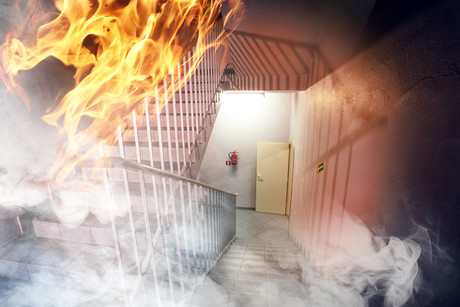Improved safety protocol needed for building claddings

Better safety testing is required for high-rise exterior building claddings, according to FM Global.
This follows a spate of expensive and fatal fires that have taken place in some of the world’s newest and tallest buildings.
The highly combustible exterior claddings have been chosen for aesthetics, energy efficiency, weatherproofing and cost-effectiveness, but have not taken safety into consideration.
In New South Wales, an inter-agency Fire Safety and External Wall Cladding Taskforce was established in June 2017 as part of the NSW Government’s ongoing work to address fire safety risks associated with external wall cladding.
The taskforce has taken a number of actions to support the already stringent laws in NSW, including identifying aluminium cladding on buildings in NSW and ensuring affected buildings are safe. Fire and Rescue NSW will be undertaking further work to collect information from building owners whose legal responsibility it is to ensure fire safety.
The Cladding Taskforce is also writing to occupants of the buildings that require further assessment to update them on the work being done to ensure the safety of their building.
FM Global regularly conducts fire research and participates in global building-code improvement efforts. It understands that scientifically robust, repeatable, cost-effective and timely testing must be completed to properly assess if a building material is fit for purpose.
For that reason, FM Global has proposed a better testing protocol that follows the company’s in-depth examination of exterior wall systems made of metal composite materials (MCMs) or aluminium composite materials (ACMs) using 16-foot-high parallel panels as outlined in the test protocol for the ANSI/FM 4880 standard.
FM Global outlines the strengths of the proposed protocol in a new research technical report, ‘Evaluation of the Fire Performance of Aluminum Cladding Material (ACM) Assemblies Using ANSI/FM 4880’.
“While many fire engineering firms perform desktop assessments in good faith, current practices and regulations introduce the possibility that substandard, dangerous assemblies will slip through the cracks,” said Dr Louis Gritzo, vice president, manager of research at FM Global.
“We can’t afford to take this risk as buildings burn and lives are lost, even in the developed world. We believe the protocol in ANSI/FM 4880 is a key to the solution.”
The research technical report complements a recently released FM Global white paper, ‘Grenfell: The Perfect Formula for Tragedy’, that explores the dangers of combustible cladding.
Vic employers urged to manage the risks of working in heat
WorkSafe Victoria has issued a reminder for employers to ensure their workers are protected from...
SWA releases bushfire planning resources for workplaces
Safe Work Australia has released an information sheet to help PCBUs use the national fire danger...
Report reveals lingering mental health burden on firefighters
A report released by Curtin University has highlighted the mental health struggles of first...










